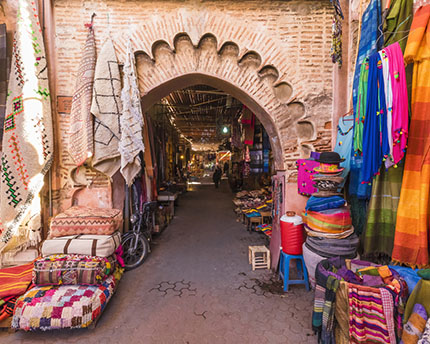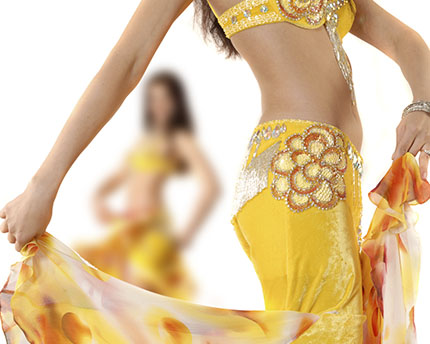Medina of Marrakech
The medina of Marrakesh offers an urban landscape full of contrasts. Many probably associate it with chaos and the hustle and bustle of its squares and markets. However, this is too simplistic a description, as it completely ignores the calm that can be found in the courtyards of its riads, beautiful traditional palaces, or in the gardens of its mosques.
Indeed, Marrakesh is neither one-sided nor two-sided. It’s a multi-faceted city where minarets and palm trees tower above the rooftops, food stalls emerge from every corner as if by magic, and the sun provides unforgettable sunsets.
Jemaa el-Fna Square is surely the spot that best demonstrates the Moroccan city’s chameleon-like nature. Considered the city centre, during the day it’s bustling with life as locals and tourists alike pass through on foot, by bike or motorbike, where you can find everything from tattoo artists to snake charmers. At sunset, it’s worth going up to one of the terraces of the surrounding cafés to watch the sun go down next to the minaret of the Kutubia Mosque, at which point the square fills with food stalls and takes on a new dimension.
But returning to the minaret of the Koutoubia Mosque, a magnificent testament to Marrakesh’s Almohad past, we must remind visitors that it acts as a reliable guide to help them find their way in case they get lost. Standing 70 metres tall, this structure, topped with four bronze spheres, was the one that inspired the Giralda in Seville and the Hassan tower in Rabat.
Unfortunately, only Muslims can go inside the Koutoubia mosque, but there’s no need to worry, as the medina has other buildings that will allow visitors to fall in love with the ornamental elegance of Moroccan architecture. This is true of the Bahia Palace, a complex built at the end of the 19th century with the aim of becoming the most spectacular palace complex in the world. It covers a total area of eight hectares, with 150 rooms decorated with high-quality materials, including tiles from the Rif and cedar wood from the Atlas Mountains.
Likewise, the courtyards of the Dar Si Said Museum and the Ben Youssef Madrasa will allow you to connect with that other side to Marrakesh that shuns noise and haste and invites you to enjoy the visual spectacle of the colourful tiled plinths and the plasterwork that adorns its walls.
However, it’s worth returning to the hustle and bustle to stroll through the magical souk of Marrakesh and enjoy the colours, sounds, and smells of its stalls. Here you can buy spices, rugs, jewellery, lamps, musical instruments, and much more. Among all that’s on offer, it’s a good idea to visit the dyers souk, where traditional dyeing techniques are still practised, and the babouche souk, which is an explosion of colour.
Nearby plans
Related plans

Marrakesh souk, the home of haggling
Like a spider’s web, the narrow streets of the souk of Marrakesh will trap you in a world of aromas and different shades of colour.

6 ideas for romantic things to do in Marrakesh that you won’t want to miss
Marrakesh, one of those cities where time seems to have stood still, opens its doors to couples and invites them to enjoy an endless array of romantic possibilities.

Belly dancing shows, the magical side to Marrakesh
Belly dancing, known as “shikhat”, is a common sight at all kinds of celebrations, music and dance festivals, as well as in hotels and restaurants.


